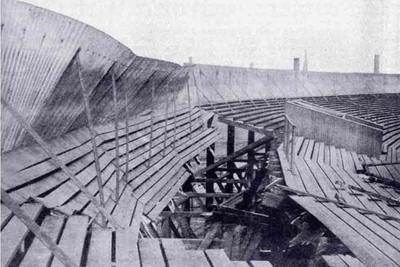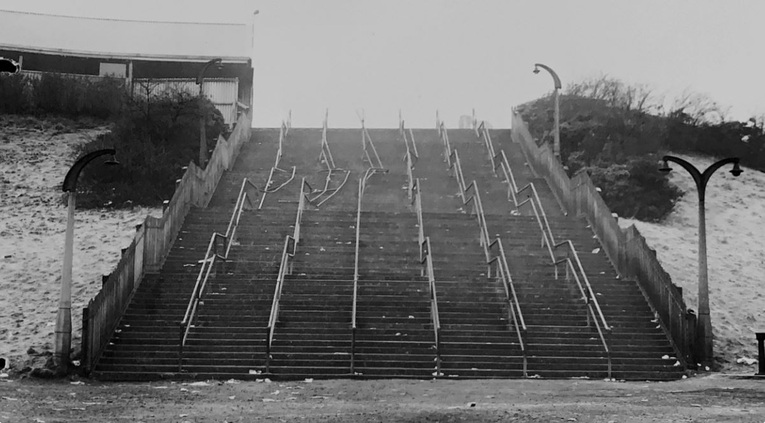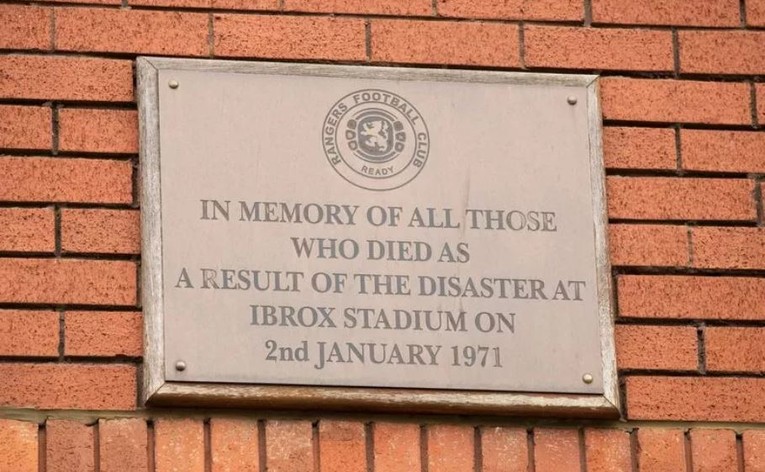Ibrox Stadium opened in 1899 as Ibrox Park and has been the home of Glasgow Rangers ever since.
Tragically it has also been involved in two separate disasters during its existence.
Here we’ll have a look at both of these events, exploring how they happened and their aftermath. Despite the location of them we will treat them as the separate incidents that they were.
The 1902 Ibrox Disaster
 On the 5th of April 1902 around 68,000 people were gathered at Ibrox to watch Scotland take on England in a Home Championship match. Back then stands were nowhere near as safe and solid as they are nowadays, particularly when it came to the building materials used for the terracing.
On the 5th of April 1902 around 68,000 people were gathered at Ibrox to watch Scotland take on England in a Home Championship match. Back then stands were nowhere near as safe and solid as they are nowadays, particularly when it came to the building materials used for the terracing.
The West Tribune Stand has recently been re-built with wooden planks that were supported by steel girders. This was done as it was a cheaper way of constructing a larger terrace, meaning about 36,000 people could be housed in it. Such huge numbers were needed to give Ibrox Park more chance of hosting Scottish cup finals and international matches, with Celtic Park and Hampden Park both also competing for that honour.
in spite of the fact that the Govan Burgh Surveyor passed the wooden structure fit for service, newspapers reported that it was unstable. Sadly the materials used for the build were not of a good enough quality and heavy rain the night before had caused some of the wood to become soft and unable to support the weight of the thousands of supporters gathered there successfully – just as the newspapers had predicted.
51 minutes into the match, at about quarter-past-four, the back of the stand collapsed. There was nothing underneath it other than the girders that had been supporting the wooden slats, meaning that those standing in that area simply fell though the floor from a height of about twelve metres or forty feet.
Hundreds and hundreds of people fell, with twenty-five people losing their lives. Another 517 people were injured, some very seriously. The match was brought to a halt but it was feared that abandoning it would see supporters rush to the exits thereby slowing down the rescue work; especially as most supporters didn’t even realise what had happened, with some even moving into the now abandoned area completely unaware that it could collapse again. For that reason the game was, incredibly, allowed to continue.
After the match the football Associations of both countries agreed to void the result and hold a replay at Villa Park, the home of Aston Villa in Birmingham. All funds raised from this game were donated to the disaster fund for the families of the victims.
In the wake of the game a decision was taken to ban terraces made of a framework of wood and steel girders. Instead terraces all over the United Kingdom had to be made in such a way that they were supported by solid, compacted earth or else reinforced concrete.
The 1971 Ibrox Stadium Disaster

It is perhaps a sad quirk of fate that the two disasters to occur at Ibrox took place when major rivalries were being played out on the pitch. In 1902 it was Scotland against the auld enemy England, whilst in 1971 it was an Old Firm match between Rangers and Celtic that was taking place when disaster struck.
Another tragic part of this disaster is that Rangers had been given a warning of what might happen nearly ten years earlier. on the 16th of September 1961 two people died when a crush occurred in stairway 13, the passageway that led to the closest exit to nearby Copland Road Subway Station. Similar incidents happened in both 1967 and 1969, too. Thankfully nobody died on either of those dates but Rangers could have done more to prevent it happening again.
Unfortunately the club had spent around £150,000 making improvements to the stadium by the end of the 1960s and believed they had dealt with the issues that had occurred previously. We now know that wasn’t the case and that 66 people lost their lives because of the club’s complacency.
It was on Saturday the 2nd of January 1971 that the second disaster happened. More than 80,000 people had been welcomed into Ibrox for the visit of Rangers’ city rivals and it was a largely drab affair until Celtic took a 1-0 lead in the 90th minute. At that point hundreds of Rangers supporters began to leave the ground in disappointment, only for Colin Stein to score an equaliser moments later.
In the aftermath of the disaster some speculated that it occurred because Rangers fans tried to get back into the ground when they heard the celebrations over the equaliser, but the disaster’s official inquiry ruled out this idea because all of the victims were going the same way when the crush happened.
Even now it is not known exactly what happened. It is hypothesised that a father carrying a child on their shoulders slipped and the child fell, causing something of a chain-reaction that saw people pile into and onto each other. Many of those that died were indeed children; the youngest being a boy named Nigel Patrick Pickup who was from Liverpool. He was just eight years old.
After the disaster the government decided to look into the safety situation in the various sports grounds around the country. Ibrox was largely overhauled, seeing its capacity drop to 44,000 by 1981. Lord Wheatley, a Scottish judge who had conducted the inquiry into the disaster, released his findings in 1972 and they went on to form the outline for the Guide to Safety at Sports Grounds.
The majority of victims died from traumatic asphyxia; the same thing that would result in the deaths of 96 people at the Hillsborough Disaster nearly twenty years later. Sheriff James Irvine Smith ruled that the accident was because of ‘negligence’ by Rangers Football Club, awarding damages to the family of Charles Dugan who died in the disaster. The club did not dispute this and were then sued in a further 60 cases.

